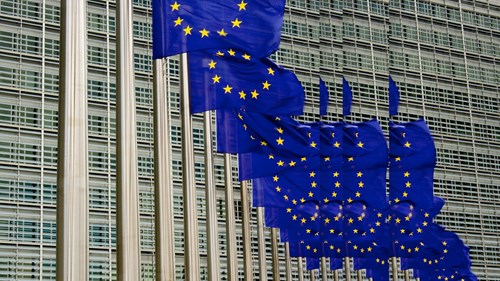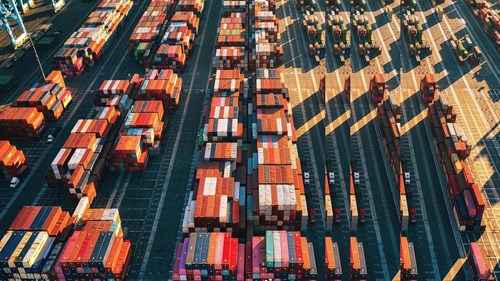New CBAM reporting obligations: increasing bureaucracy for EU-companies
The Carbon Border Adjustment Mechanism (Regulation (EU) 2023/956 establishing a Carbon Border Adjustment Mechanism; “CBAM Regulation”) already entered on 17 May 2023 into force. Since 1 August 2024, it has become mandatory to use the methods defined by the CBAM Regulation for determining emissions. This new requirement places additional bureaucratic requirements on EU-companies.
CBAM is gradually phased in and thereby aligns to the phase-out of free allowances under the EU Emissions Trading System (“ETS”). CBAM supports the decarbonisation of the EU-industry by ensuring that importers from non-EU countries bear similar costs for direct and indirect greenhouse gas emissions (“GHG”) embedded in their imports compared to EU-production. The CBAM thus aims at ensuring that producers do not relocate their production to countries with less stringent climate policies (so-called “carbon leakage”) which would contravene the EU’s climate targets. In this respect, the CBAM aims at contributing to the EU’s ambitious goal of reducing greenhouse gas emissions in the EU by at least 55% by 2030 compared to 1990.
Reporting declarants, i.e. importers or the indirect customs representatives, must report emissions of CBAM goods quarterly during the current transition period (1 October 2023 to 31 December 2025) (see A.). In addition, emissions must now be calculated pursuant to the method defined in the CBAM Regulation and its Implementing Regulation (see B.). From 2026 onwards, CBAM certificates for all embedded emissions of the relevant goods are necessary (see C.).
A. Reporting obligations under the CBAM
Since 1 October 2023, reporting declarants already had to report information about their emissions following Art. 35 of the Regulation. This included the actual total of embedded emissions and the total indirect emissions caused by their CBAM goods. The obligation applies to sectors that fall under the EU Emissions Trading Scheme, i.e. goods that have a high risk of carbon leakage and high emission intensity, such as cement, iron, steel or aluminium and electricity.
The reporting requirement of Art. 35 of the CBAM Regulation applies to reporting declarants of all goods covered by the regulation. The reporting declarant is the importer or the indirect customs representative depending on who lodges the customs declaration. The quarterly CBAM report must contain the following information following Art. 34 and 35 (1) CBAM Regulation:
- The total quantity of each type of goods in megawatt hours for electricity and in tonnes for other goods, broken down by the facilities producing the goods in the country of origin;
- The actual total embedded emissions in tonnes of CO2 emissions per megawatt hour of electricity or, for other commodities, in tonnes of CO2 emissions per tonne of each commodity type, calculated in accordance with the methodology described in Annex IV of the CBAM Regulation;
- The total indirect emissions, calculated in accordance with Art. 7 CBAM Regulation;
- the carbon price due in a country of origin for the embedded emissions in the imported goods (including its relevant precursors where applicable), taking into account any rebate or other form of compensation available.
The reporting requirements for emissions under CBAM are specified in the Implementing Regulation (EU) 2023/1773 (“Implementing Regulation”) laying out reporting rules during the transitional period. For example, Art. 3 of the Implementing Regulation describes the reporting obligations for reporting declarants, including the parameters for which data must be reported. Overall, the calculation of embedded emissions varies, as does the method for factoring direct and indirect emissions in for each sector (see Art. 2, 7 in conjunction with Annexes I and II CBAM Regulation).
The reports must be submitted to the CBAM portal for reporting declarants in the CBAM Transitional Register. Companies can access the CBAM portal via the customs portal. So far, such reports have not yet resulted in any financial adjustments for grey emissions. Nevertheless, the German Emissions Trading Authority (Deutsche Emissionshandelsstelle; “DEHSt”), as the competent national authority, can impose penalties. Violations of reporting obligations can also result in fines between EUR 10 and EUR 50 per tonne of unreported emissions (Art. 16 (2) Implementing Regulation). If information in reports is missing, incorrect or incomplete, DEHSt can likewise initiate a correction procedure which gives the reporting declarant the opportunity to correct errors (Art. 14 (3) Implementing Regulation). The DEHSt also imposes penalties if the declarant did not submit a CBAM report or if such report is incorrect or incomplete and the reporting declarant has not taken the necessary steps to correct the CBAM report after the initiation of a correction procedure (Art. 16 (1) of the Implementing Regulation).
B. Obligation to comply with the methodology set in the CBAM Regulation since 1 August 2024
While alternative methods and default reference values were previously sufficient for calculating emissions, reporting declarants must use the defined EU methodology since 1 August 2024, (see Art. 4 (3) of the Implementing Regulation). Until 31 December 2024, specific equivalent methods (Art. 4 (2) of the Implementing Regulation) may still be used. However, the application of said EU methodology entails several difficulties for companies. It is not always possible to gather all relevant information from third country operators to determine the actual embedded emissions of the imported goods (see Annex III of the Implementing Regulation). In such cases, it was previously possible to fall back on EU default values for emissions. In the meantime, companies must calculate the energy required over the entire life cycle of the material used on their own. This requirement entails a high level of bureaucracy and comes with significant personnel costs. Most importantly, these requirements come with legal risks. In its most recent update of CBAM FAQs, the EU Commission emphasised that reporting declarants are responsible for the completeness and accuracy of their reports. This means that “all possible efforts” must be made by the reporting declarant to obtain the actual emissions data from their suppliers or producers. If they fail to do so, reporting declarants are still obliged to prove that they have at least undertaken “all reasonable efforts”.
C. Outlook
From 1 January 2026 on, the CBAM will apply in its entirety and the CBAM requirements will gradually apply to all the grey emissions of CBAM-goods until 2033. Consequently, only authorised CBAM-declarants may import goods into the Union and have to buy and submit CBAM certificates corresponding to the total embedded emissions of their imported goods if no equivalent carbon prices apply in the country of origin (see Art. 25 (1) CBAM Regulation). The provisions for monitoring, reporting and verification are based on the monitoring, reporting and verification system of the EU ETS. CBAM declarants are also obligated to continuously submit annual CBAM reports.
Despite its gradual introduction, the CBAM still entails many uncertainties and legal risks for reporting declarants. Its phasing-in therefore requires further monitoring.
Well
informed
Subscribe to our newsletter now to stay up to date on the latest developments.
Subscribe now









